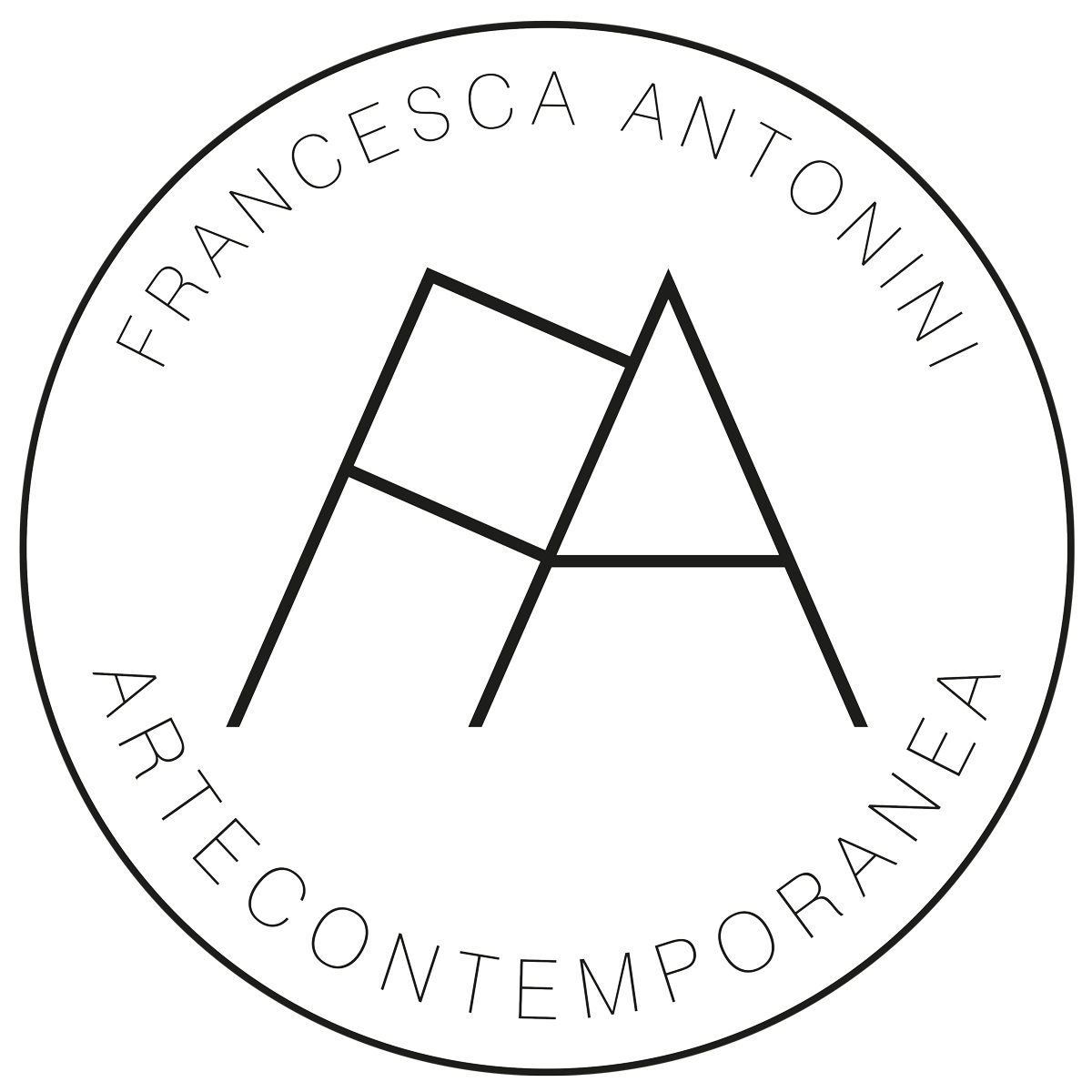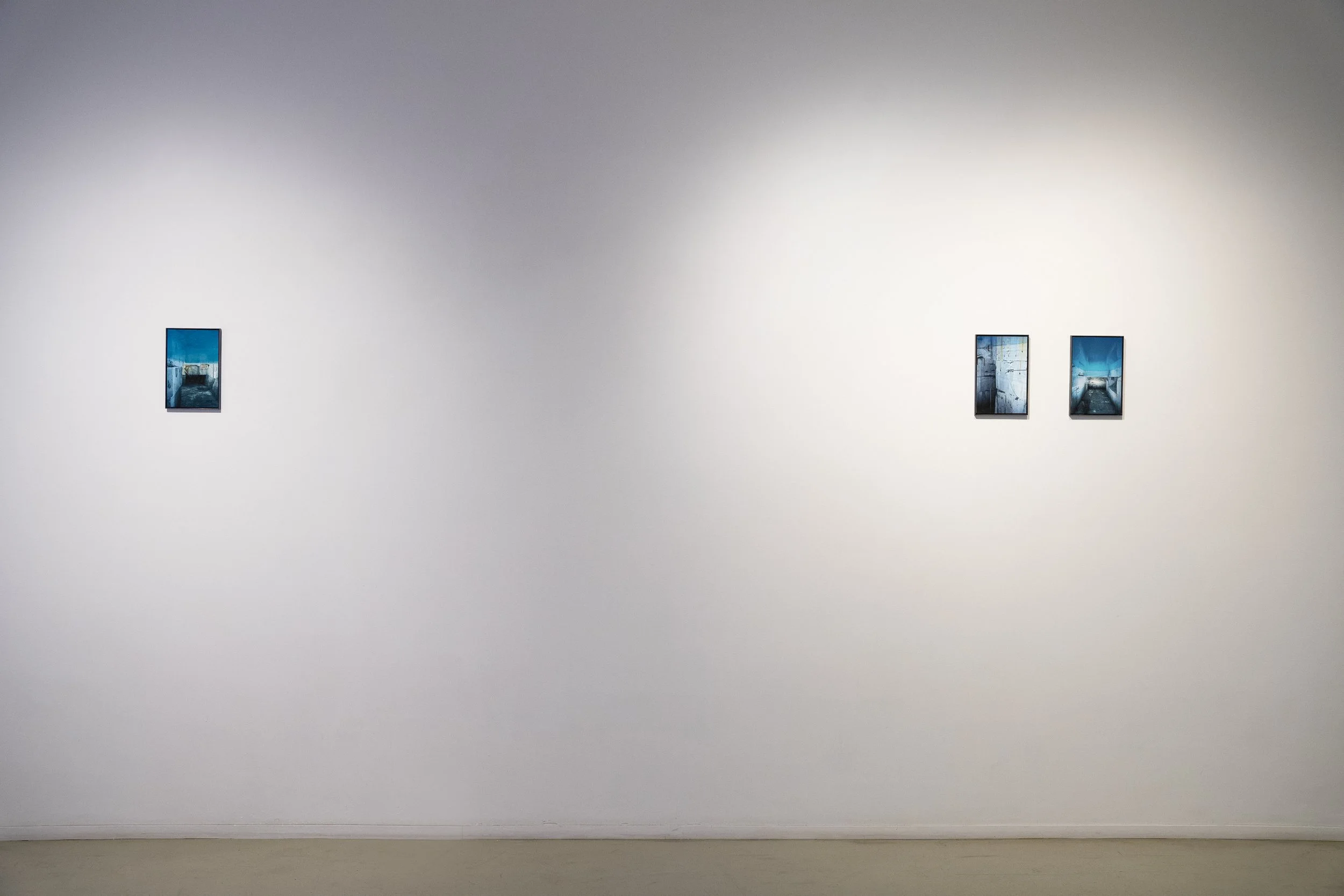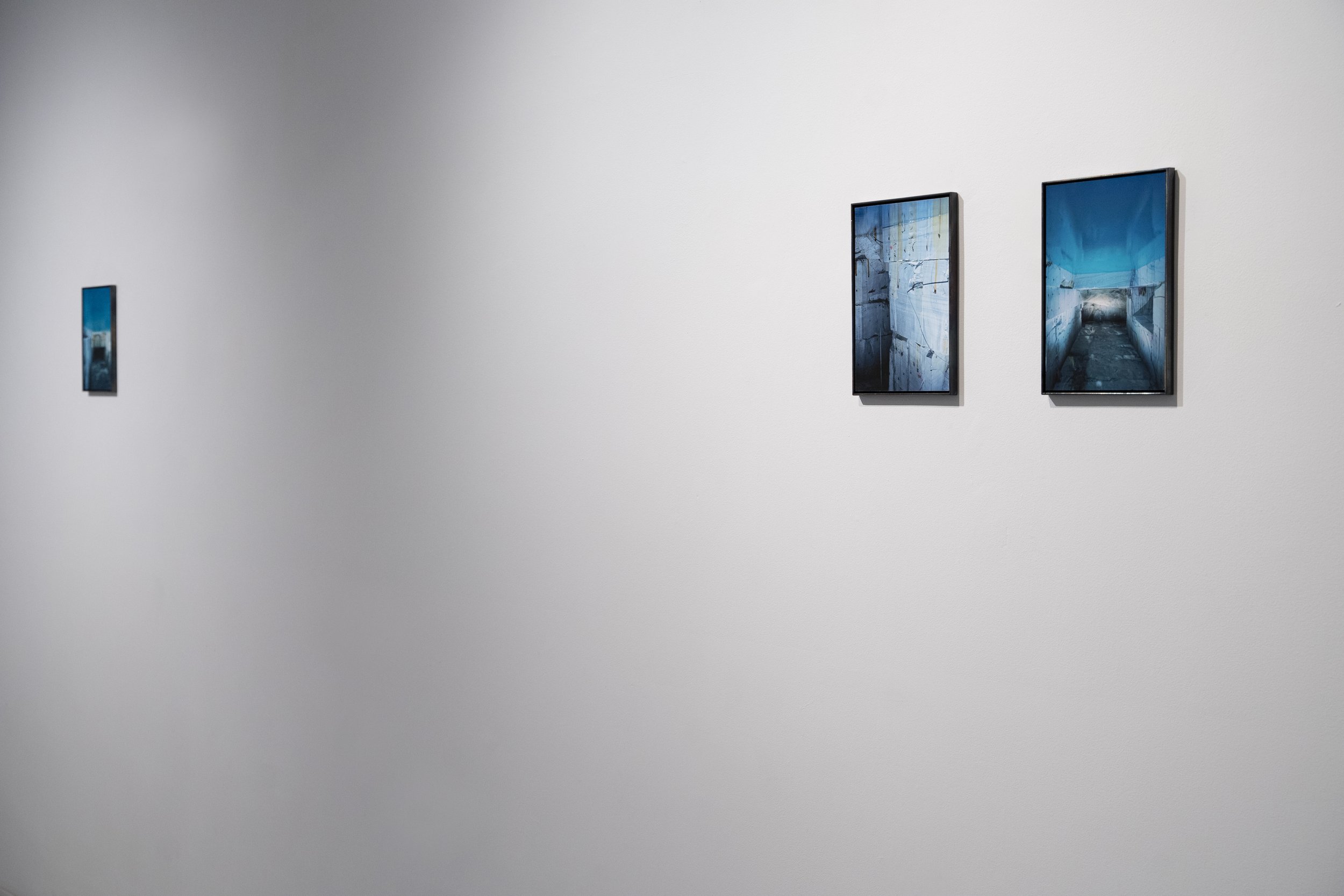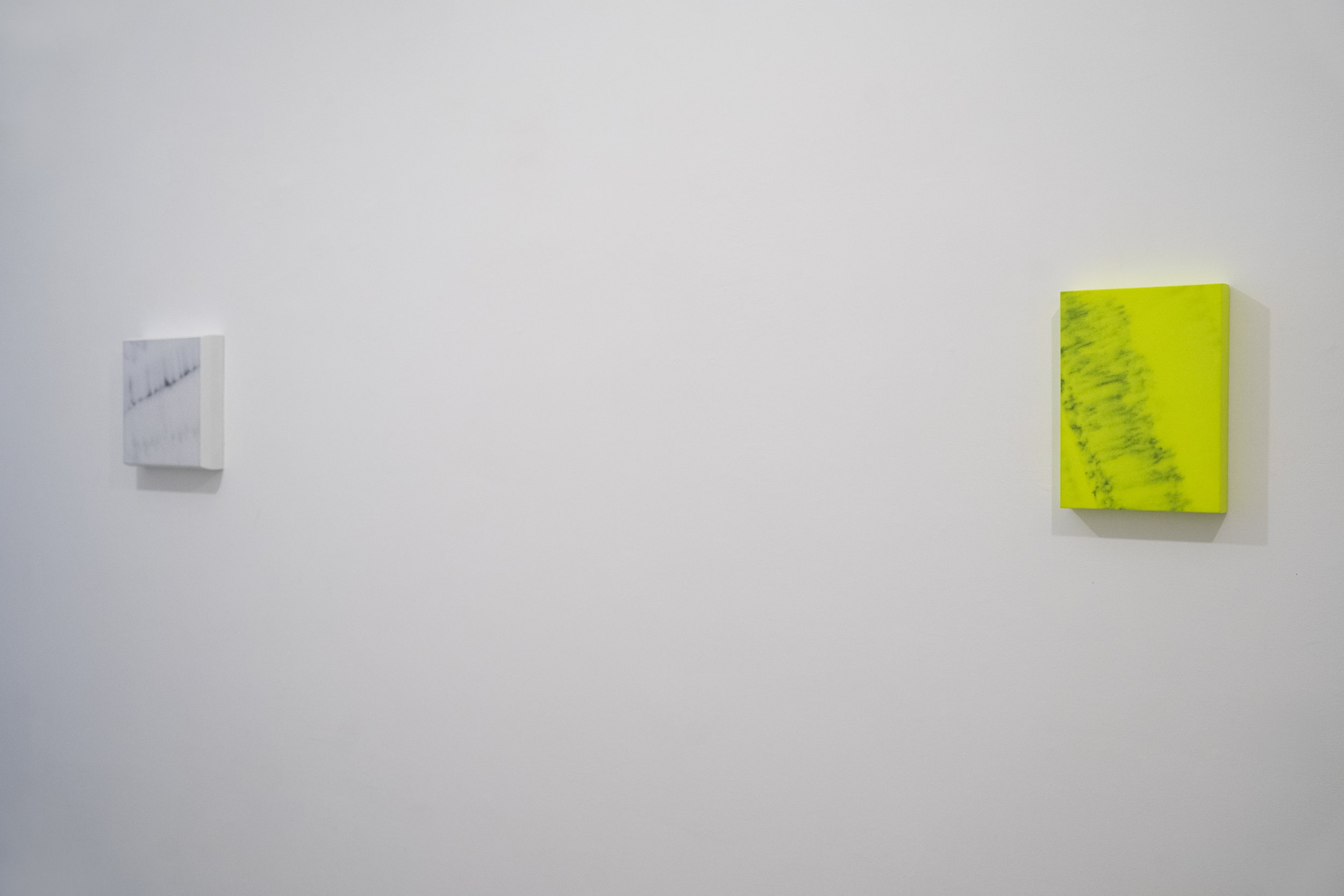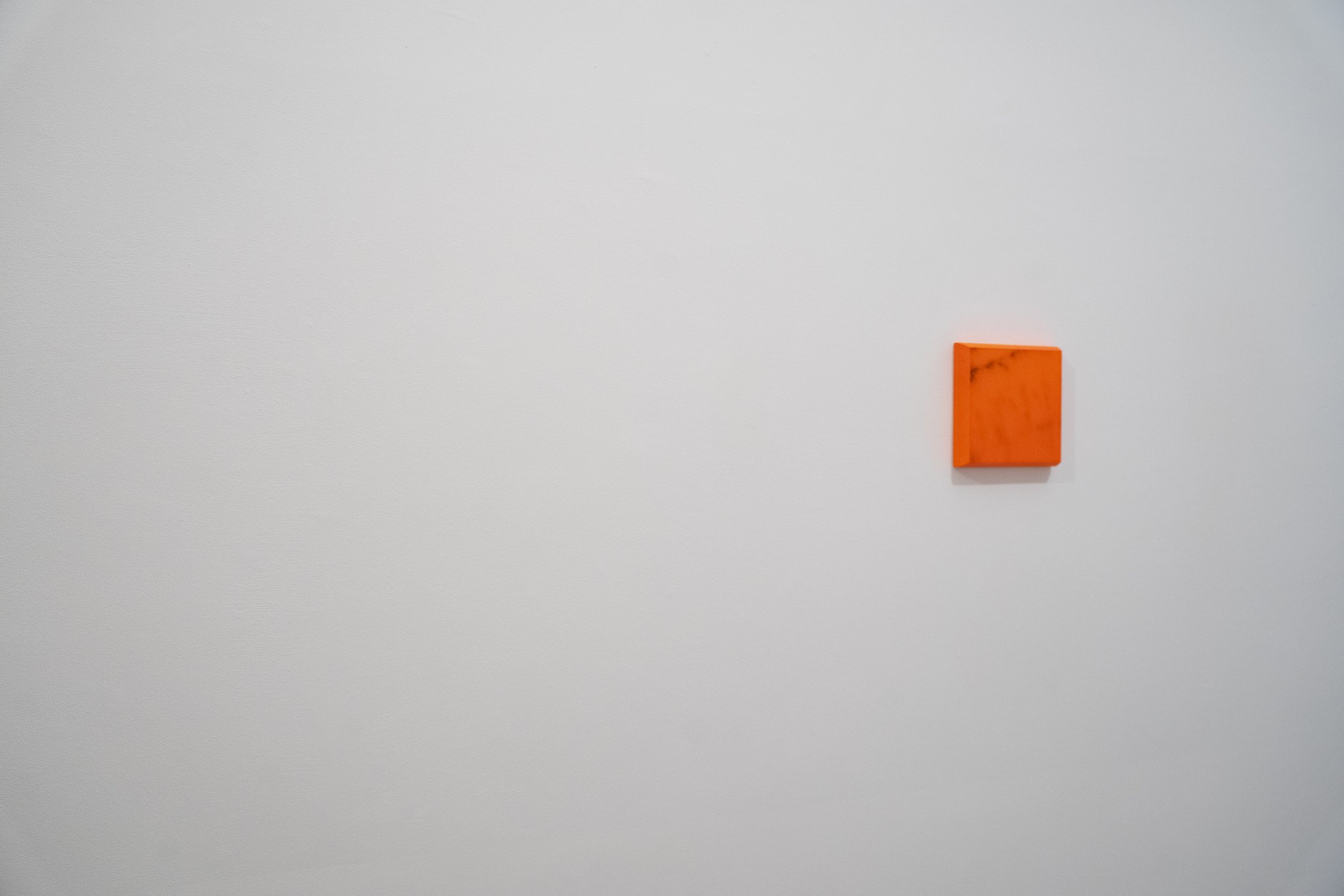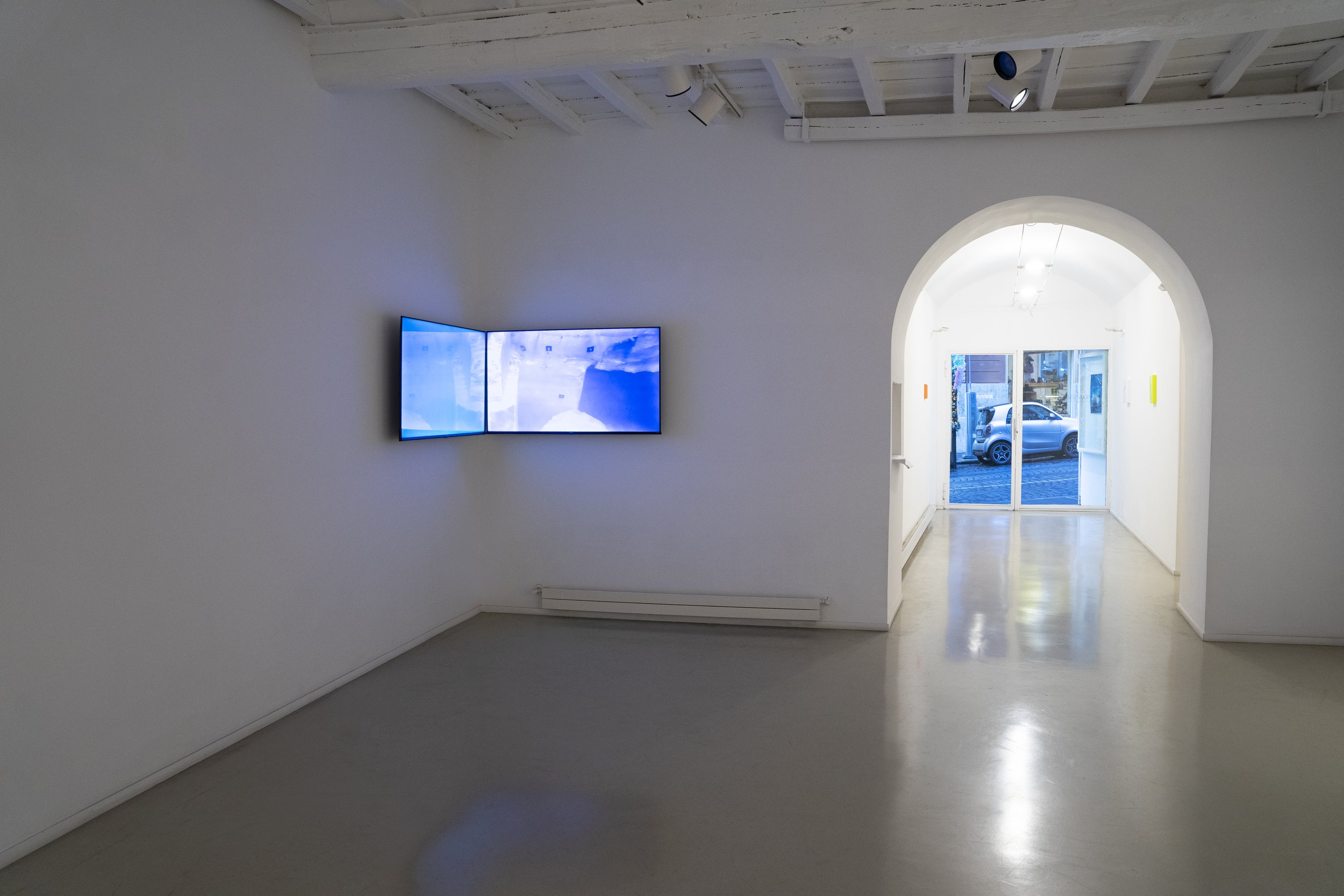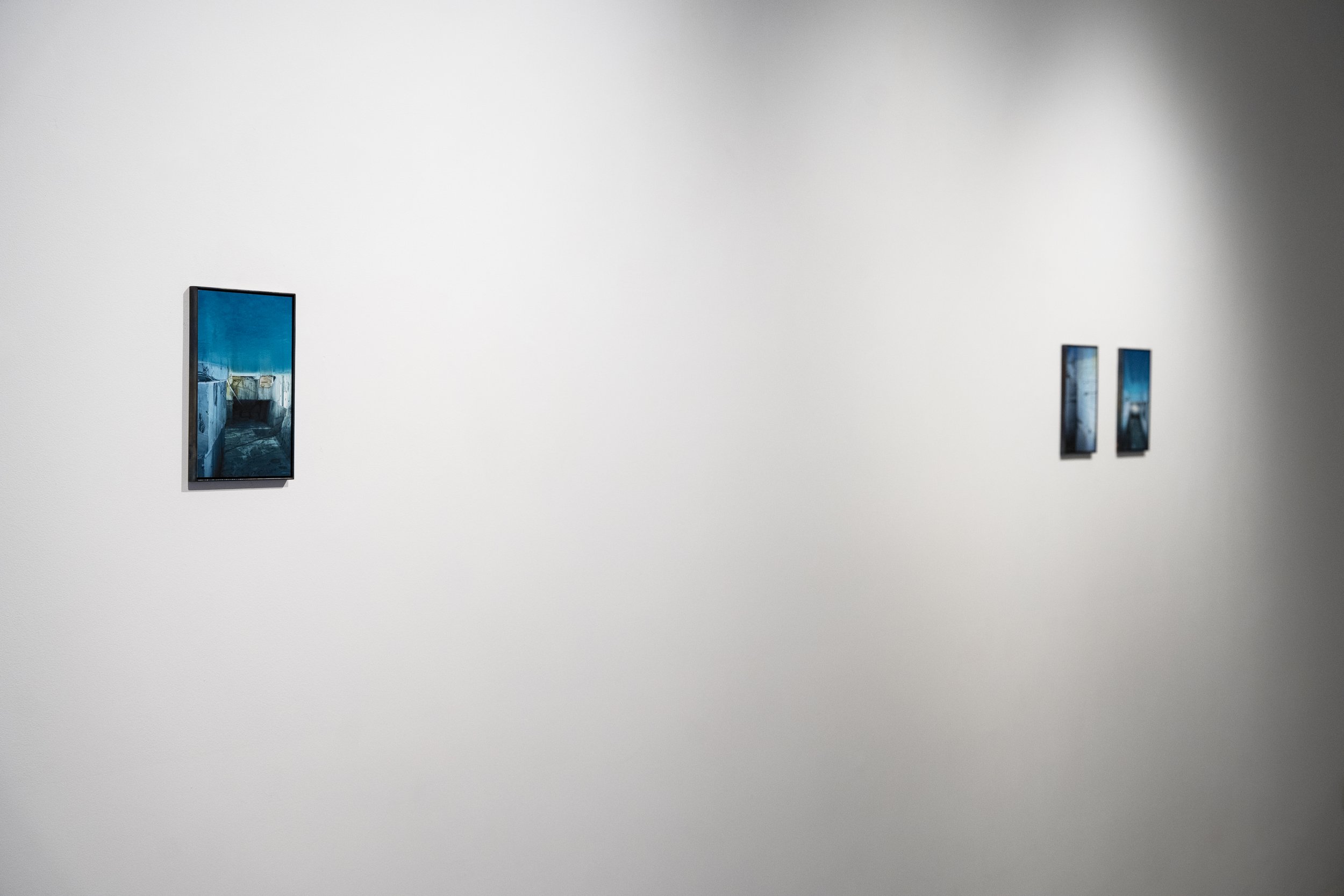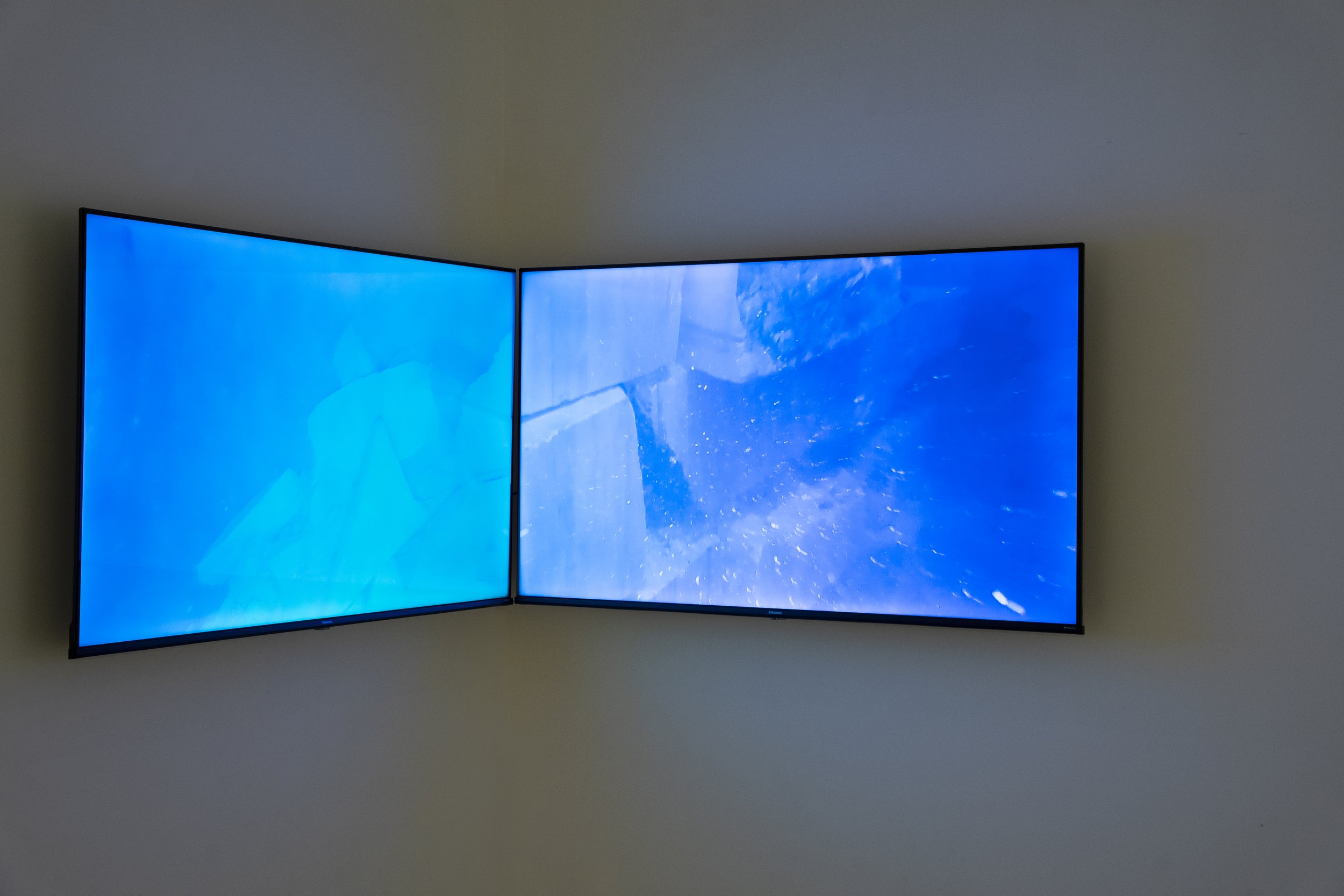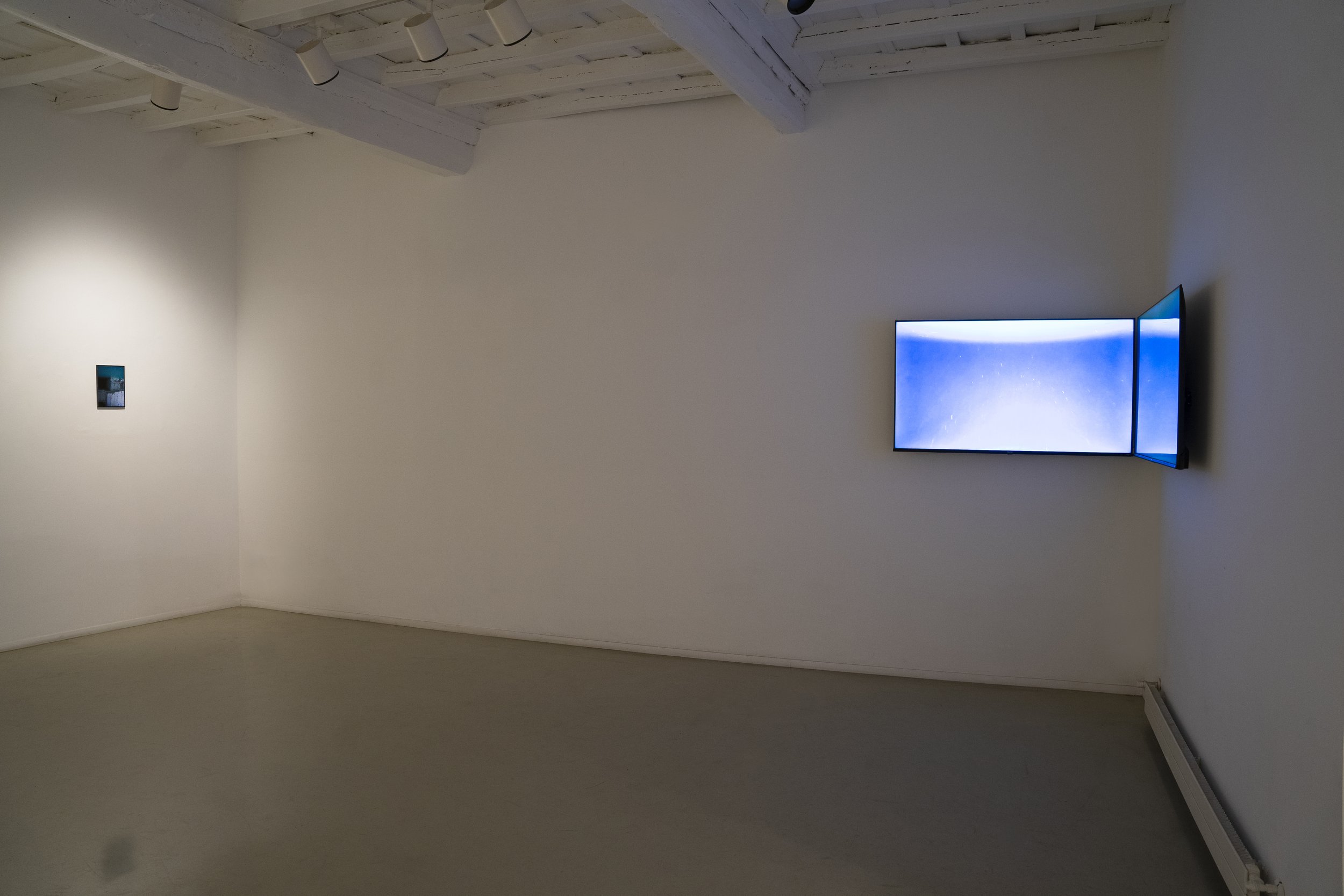NIX
DANIELA LANCIONI
Description (when, where, how)
Cametti has been working on the Nix project for a couple of years. The footage shown in the two monitors dates back to January 2023. He took the shots in the Lasa Marmi alpine quarry in the Venosta Valley, submerged in the icy waters that flood the rooms and halls created by the marble quarrying, when, during the Christmas break, the water pumps are turned off and 170 litres of water per second gush from underground. The Lasa extracted from the quarry is a marble with a high concentration of calcium carbonate, an intense white, therefore, with rare veins. The video shows crystal-blue waters and fluorescent graffiti on its walls, indicating the cracks near which it is no longer possible to extract.
From the Lasa Marmi company, Simone Cametti had slabs of marble of different thicknesses, honed but not polished, sent to his studio (in Rome). With the craft tools in his hands, he worked on them, sanding and reducing them into smaller, rectangular or square slabs of different sizes (a sampling of fifteen). He turned these blocks of marble, with their squared or shaped thicknesses, into small paintings: he chose a façade as the 'front' and drew on it with graphite, accentuating or deviating the grain pattern; he painted them yellow, pink, orange or green, the same fluorescent colors seen in the quarry (using a two-component polyurethane applied in several coats with an airbrush and protected with a transparent varnish); finally, he prepared them to be hung on a wall.
On the walls, he has also displayed, upside down, photographs taken in the quarry with a digital camera on which he has mounted old lenses from the 1950s, an experiment aimed not at dampening but at increasing chromatic aberrations. In the images everything is cloaked in the same blue, what is outside and what is inside the water. The sound, partly recorded and partly electronically re- elaborated, he worked on with Sara Antonellis and Federico Landini.
History (some shared memories)
Giuseppe Penone digging around the veins in the marble and, arbitrarily but plausibly, likening their design to that of the rivulets that innervate animated matter.
The Seven Labours of Hercules.
Ettore Spalletti who gave marble the colour and texture of air.
Blinky Palermo for whom a small rectangle of all colour was enough.
Maurizio Mochetti's Reversed Sea, where false and contrary are plausible.
The fluorescence of the state of alertness in the life jackets, in the tapes marking the scene of the accident, in the overalls of the rescuers.
... I look for a crack... Georges Bataille.
Hannah Arendt's Vita activa.
The void of quantum physics full of happenings.
Reflections (mine)
Cametti does not start a work by dealing with the blank page, but starts from a cue received from something around him (never too close). This way of working, today very common among artists, is certainly the outcome of irresistible achievements - essentially the individual's consciousness of participating in a wholeness - but I do not think it should be considered the only one possible. It is a choice. Having identified it, I ask myself about the place that attracted Cametti's attention, how he related to it, and what emerged from this relationship.
Regarding the flooded Lasa Marmi quarries, I can't find any particular basis to talk about them in literary, historical or sociological terms (in other words, they were not the destination of a great poet nor the scene of human tragedies). I can allow myself to be astonished by their beauty and the singular challenge between the work of the quarry technicians and the breath of the quarry itself.
The way Cametti relates to this place he discovered in his (frequent) explorations in the mountains is marked by a commitment that required a great deal of time, various skills and effort. Time and effort, although not innate, are familiar to art; sometimes they have been elected, one or the other, to the rank of essential attributes. Here, the effort Simone Cametti has put into the work, the risks he has taken on his person during the actions and the fatigue he has sustained are not invested with exemplary values. This is, perhaps, the most secret, special and moving feature of his work: the actions he carries out in his chosen locations do not seem to have any other purpose than to enter into a relationship with an environment perceived as exceptional and to establish a relationship with it. Commitment and effort, therefore, remain embedded in the body of the work, are necessary and proportionate to the initial context and to what has been generated by that context. The output - what is shown in the gallery, i.e. the video, the small paintings and the photographic prints - are not objects out of actions (to quote the title of Peter Schimmel's successful exhibition at the Museum of Contemporary Art in Los Angeles in 1998), but all autonomous works that can be ascribed to traditional aesthetic genres: painting, photography, video. From each of them I do not receive a definite narrative or moral, but a series of clues that seem to me to be there to suggest, only to suggest, the meaning of the work. I look at them, as one looks at a mark drawn on a blank sheet of paper, and the sense I get from it is only imagined.
Fantasies (Cametti's perhaps or Francesca Antonini's, mine, yours too?)
The veins emerging on the marble slabs are evidence of an intrusion. The calcium carbonate of the white Lasa was mixed with something else in a distant past. Cametti reinforced the veins with a dark but volatile material, graphite. He has renounced pure white and delicately preferred an image to it. We perceive it sealed with a fluorescent colour.
The small fluorescent paintings invest the gallery walls with an incandescent temperature, evoking a euphoric state (electric excitement, psychedelic culture, joie de vivre), but also sounding the alarm of the insurmountable limit (the danger we have come to know and which marks the position of recent generations).
The blue waters of the footage delimit the chosen place. Only rarely the camera emerges from that liquid which ancestral memories identify with the supreme and unsurpassable state of pleasure.
In photographs, in or out of the water, light has the same refraction, the upside down is therefore not easily perceived and it is entirely plausible. The upside down - eclipsed, but under our eyes - has the power of an unveiling. I feel a sense of common belonging.
The blue is soothing.
An action created the void (the quarry, which Cametti translates into the nothingness of the South Tyrolean dialect, nix for nichts) and the void was filled by water. The same action also created fragilities, breaking points.
Paintings, videos and photographs were generated from that emptiness and those wounds. Paintings, videos and photographs have been generated from an action performed because, quite simply, one must live, investigate one's identity, claim one's freedom, unite and discern, react and indulge, fear and love, and so on.
PRESS REVIEW
